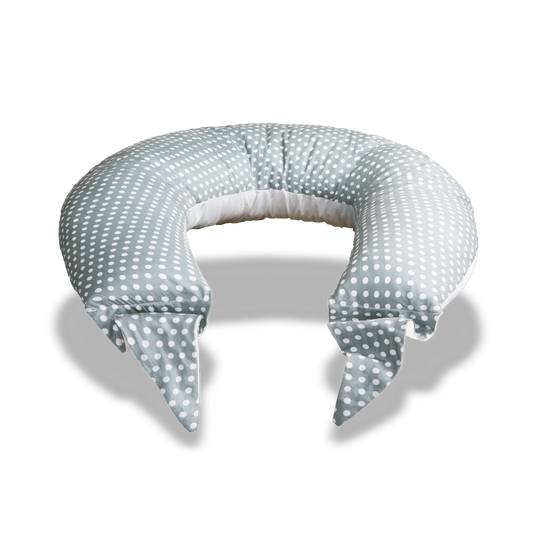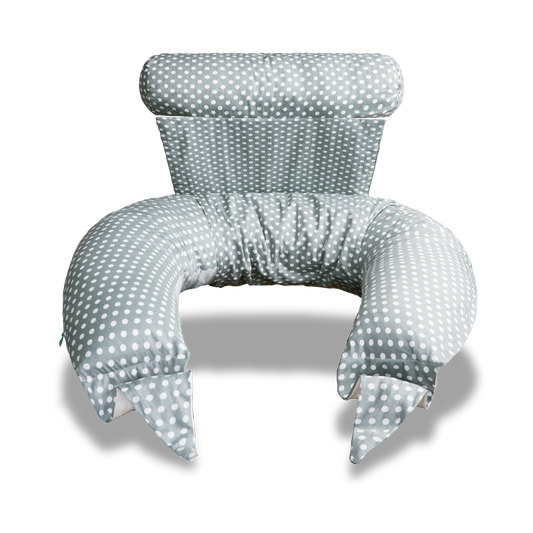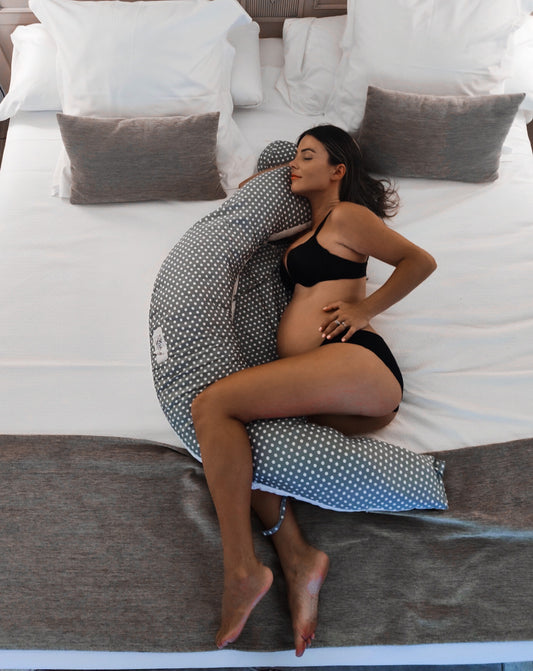Posture related health issues such as back, neck and leg pain are extremely common, but are very often overlooked. The first step to preventing joint and muscle pain is to change a few small bad habits that we pick up without even realising. Even the smallest of habits, be that good or bad ones, can have a big impact on our lives. The first step is to find out what poor posture habit we tend to adopt while working, sleeping, or carrying weights.
1. Sleeping on your stomach is bad for your health
Sleeping on your stomach at night doesn’t allow your spine to unload and rest as it needs to, and forces your neck into an unnatural position. Let's take a look in more detail:
- Spinal discs are subject to compression even at night when they should be resting and recovering. Spinal discs cushion our vertebrae and act as shock absorbers. During the night, they stretch out as we lie down while sleeping, this allows your back to unload and rest. Sleeping on your back or side, on a good support (i.e., pillow and mattress) helps the discs recover elasticity and space.
On the contrary, sleeping on your stomach causes too much extension in your back and consequently, doesn’t provide the discs in your spine with enough space, forcing them to act as shock absorbers even when at rest.
- It obstructs correct functioning of the diaphragm.
Our diaphragm plays a key role in good posture, sleep, and movement of internal organs. It separates the thoracic cavity from the abdominal cavity and is connected to many muscles and internal organs by nerves and veins.
Sleeping in the prone position (on your stomach) prevents your diaphragm from expanding properly, as both ribs and sternum are compressed. As a result, function is impaired and intestinal problems, stomach-ache and back pain can occur.
- Your neck lies in an unnatural position for hours.
Keeping your head turned to one side for hours at night overstretches muscles on one side of the neck and contracts muscles on the opposite side, resulting in neck and back pain.
Try to avoid sleeping on your front. If you already do so, try falling asleep in another position. Even if you tend to turn back on your stomach at some point during the night, your body will slowly start getting used to a new position.
2. Carry heavy objects distributed evenly between your right and left sides
A common mistake we often make is carrying weights on one side, and usually always on the same side, which over time creates an imbalance and can consequently lead to hernias or protrusions.
Imagine your body as a boat: it stays afloat as weight is distributed equally between the left and right sides, but if we shift the load over to one side, there’s a risk it will tip over.
We therefore need to make an effort to distribute weight evenly or to alternate which arm we use to carry heavy objects to prevent causing stress on our spine by pressing it towards one side, and provoking troublesome back pain.
3. Lift heavy objects in front of you with your knees bent
Lift heavy objects using the half-squat position to avoid straining your lower back. Always place the object directly in front of you and bend your knees (not your back). This helps reduce exertion on your knees, hips and back.
4. Avoid standing still for long periods of time
Standing still for long periods of time is harmful not only to our muscular system, but also to our circulatory and lymphatic systems.
What happens? It makes some muscles work excessively and others too little, resulting in postural issues. In addition, fluid accumulation can occur, which can be dangerous for your health. It is much better to move or change position every 15 minutes or so.
5. Advice for people working in a static position
If you work in an office, or in a static position, there are a few steps you should take to prevent posture related pain:
- When seated, it is best to position your computer straight in front of you with the screen at eye level, rest your forearms on the desk, your feet on a footrest and your back firmly up against the back of the chair. This keeps your spine in a comfortable position.
- When standing, you should place an elevation (of at least 20 cm) under one foot to prevent the upper body from being flexed excessively for long periods, as this can lead to back pain.
The first step is to understand the poor posture habits you tend to adopt which may impact on your overall health. The second step is to take corrective action.
At the beginning, we usually have to make a conscious effort and pay constant attention to our poor posture, it feels unnatural when you try to correct it, however, over time it will become simpler and more spontaneous. By then, you will have developed a new, healthier habit.
Roberta Rossi - Osteopath
Roberta, who graduated in Sport Science and Osteopathy, teaches how to ensure you keep well and how movement can help to keep you healthy. She has an Osteopathy private studio and is a Pilates teacher. Since 2019 she has been using Social media to explain how we should take care of our body. Instagram: @robertarossi.osteopata.








